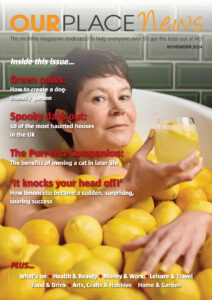Starting on February 22nd and concluding on April 6th, this year Lent stretches over 43 days. So, if you’ve decided to go cold turkey on your favourite food or drink, you may be in for a rough ride.

Six weeks (and one day) is a long time to give up anything, but have you ever wondered why some culinary pleasures – think alcohol, caffeine, sweet treats and junk food – are harder to ditch than others?
Here, experts explain what makes it so hard, and offer advice on how to stay the course…
Caffeine
“Caffeine is a stimulant, which is why so many turn to their mug of coffee or tea for that spring in their step,” says Professor Denis Kinane, founding scientist of health and wellness services provider Cignpost.
Whether you love a latte, an Earl Grey or a matcha, that buzz is what makes caffeinated drinks so addictive.
“Like any other stimulant, when you stop taking it you may experience withdrawal symptoms, which can make it harder to quit,” Kinane explains. “Caffeine affects the central nervous system, so you may get shaky, irritable, and suffer with headaches.”
To lessen the severity, try weaning yourself off in the days before Lent starts. “Start slowly, each day consuming a little less to make the transition easier,” he suggests.
Alcohol
As opposed to alcohol addiction (for which you should seek medical help), if you struggle to quit moderate drinking for Lent, it’s likely to do with the lifestyle aspects.
“Alcohol is often seen as a way to relax and socialise,” says Melissa Kuman, nutritionist at X-Pilates. “It’s also everywhere, so it is hard to forget about!”
Therefore, you’d do better to reduce temptation by avoiding activities that revolve around booze.
“Remembering that there are other ways to unwind – such as listening to music, reading a book or socialising with friends who are also staying sober – can be really helpful,” says Kuman.
“If you’re looking for an alternative, consider non-alcoholic drinks, such as non-alcoholic gin and mocktails, which can be equally as tasty and satisfying.”
Meat
From bacon sarnies at breakfast to roast dinner with all the trimmings on Sunday, meat-based meals are seriously tempting for carnivores.
“Many people find meat incredibly enjoyable to eat, due to its savoury flavour and satisfying texture,” says Kuman. “It’s also incredibly convenient, since it’s widely available and easy to prepare.”
To curb your cravings, try experimenting with meat alternatives. “Consider plant-based proteins, such as tofu, tempeh, Quorn and seitan,” Kuman says.
“It’s also worth exploring various vegetarian meals to find ones that you find delicious. Spaghetti Bolognese with Quorn mince and shavings of parmesan is a favourite of mine.”
Chocolate and sweets
“Studies have shown that chocolate can be as addictive as hard drugs by momentarily tapping into the same pleasure centre,” says Kinane.
“However, ‘momentarily’ is the key word here. When you eat chocolate, your brain responds but that response only lasts a few minutes, which is why it leaves you craving more.”
Likewise, sweets and lollies cause a spike in blood sugar and a subsequent ‘crash’, which makes you want to grab more goodies.
“If you’re looking for an alternative, consider healthier snacks, such as dried fruits, which have a chewy, sweet texture or creamy yogurt, whipped with peanut butter,” Kuman says.
Citrus flavours – such as water with a squeeze of lemon or lime – can zap sweet cravings, and it helps to stock up on nutritious foods, she adds: “Keep fruit handy for a natural sweet treat, and eat little and often to avoid reaching for sugary foods when you’re hungry.”
Fast food
The reason burgers, fish and chips, fried chicken and other high-calorie takeaway favourites are so satisfying apparently relates back to caveman times.
“Evolutionarily, getting calories on board is extremely important for survival when food is scarce,” Kinane says.
“That can go some way to explaining why we find fast food so enjoyable. (They are) high in refined carbohydrates and fats, making them rich in calories.”
That doesn’t mean you have to eat rabbit food all Lent, though. “Many of your favourite takeaway classics can be made healthier and cheaper at home,” he says. “Particularly those with high satiety, which will make you feel full quicker – foods high in protein can be great for this.”
Kuman also recommends batch cooking, so you’ve got healthy meals on hand.
“Salads are a great meal prep dish, as you can make lots of different components and combine fresh ingredients each morning,” she says.
“You could also sign up to a food delivery company, which makes healthy cooking easy and convenient.”
(Article source: Silver Surfers)

